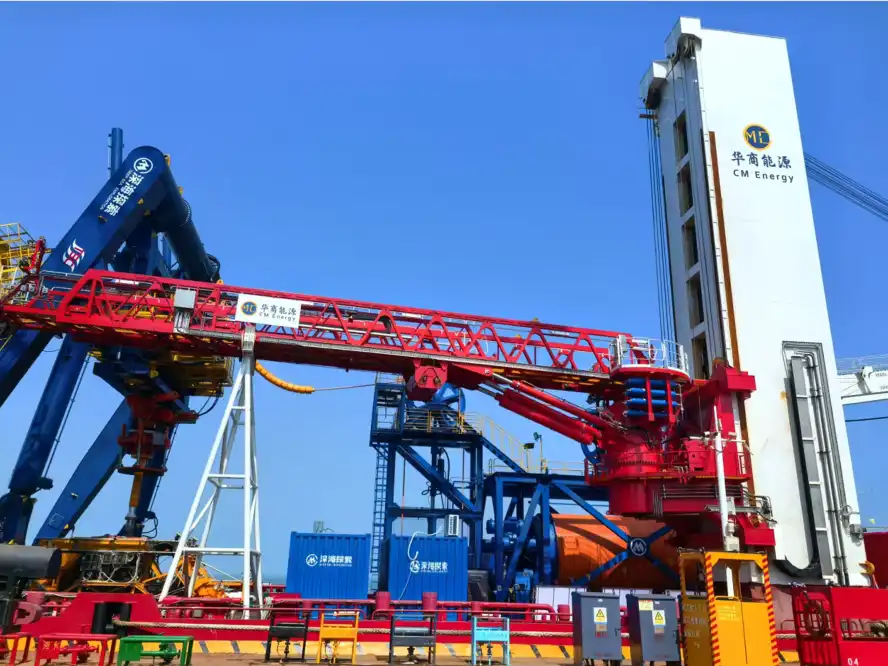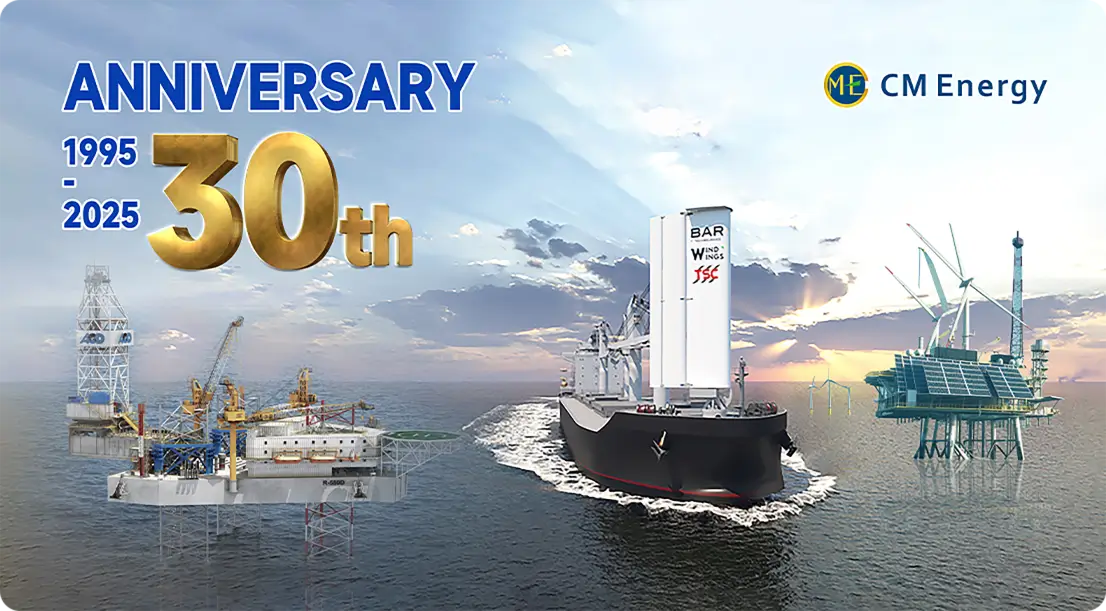Gangway's AOPS/MOPS Systems: Advanced Overload Protection
Gangway's AOPS/MOPS Systems represent a significant advancement in maritime safety technology, particularly for AMC Gangway systems. These Advanced Overload Protection Systems (AOPS) and Motion Overload Protection Systems (MOPS) are crucial components in ensuring the safe transfer of personnel between vessels and offshore installations. By integrating sophisticated sensors and control mechanisms, AOPS/MOPS technology enhances the operational safety of gangways, preventing accidents caused by excessive loads or sudden movements. This innovation is particularly valuable in the challenging conditions often encountered in offshore environments, where safety is paramount. For companies like CM Energy, which prioritizes cutting-edge solutions in marine equipment, incorporating AOPS/MOPS into their AMC Gangway designs demonstrates a commitment to safety and technological advancement in the maritime industry.

How AOPS/MOPS Enhance Gangway Safety
AOPS/MOPS systems significantly improve gangway safety by providing real-time monitoring and automatic response mechanisms. These systems continuously assess the load and motion parameters of the gangway, ensuring they remain within safe operational limits.
Real-Time Load Monitoring
One of the primary functions of AOPS is to monitor the weight load on the gangway continuously. This feature is crucial for preventing structural damage and ensuring the safety of personnel using the gangway. When the system detects that the load is approaching or exceeding the safe limit, it can trigger alarms or initiate automatic safety protocols.
Motion Compensation
MOPS plays a vital role in compensating for the relative motion between the vessel and the offshore structure. This system adjusts the gangway's position in real-time, maintaining a stable and safe walkway even in challenging sea conditions. By doing so, it significantly reduces the risk of accidents caused by sudden movements or wave action.
Automatic Shutdown Mechanisms
In cases where safety thresholds are exceeded, AOPS/MOPS systems can automatically initiate shutdown procedures. This might include retracting the gangway, locking it in place, or preventing further use until safety conditions are restored. Such automatic interventions are crucial in preventing accidents in situations where human reaction time might be too slow.
Key Components of AOPS/MOPS Technology
The effectiveness of AOPS/MOPS systems in enhancing gangway safety relies on several key technological components. Understanding these elements is crucial for appreciating the sophistication and reliability of modern AMC Gangway systems.
Advanced Sensors
At the heart of AOPS/MOPS technology are highly sensitive sensors. These include load cells for weight measurement, accelerometers for motion detection, and gyroscopes for orientation tracking. These sensors provide continuous, real-time data about the gangway's operational conditions.
Intelligent Control Systems
The data from the sensors is processed by sophisticated control systems, often utilizing artificial intelligence and machine learning algorithms. These systems can quickly analyze complex data patterns to make informed decisions about gangway operation and safety.
Hydraulic and Mechanical Actuators
To implement the decisions made by the control systems, AOPS/MOPS rely on advanced hydraulic and mechanical actuators. These components can quickly adjust the gangway's position, extend or retract it, or lock it in place as needed.
User Interface and Alerts
An essential component of AOPS/MOPS is the user interface that provides real-time information to operators. This includes visual displays showing load status, motion parameters, and safety alerts. Audible alarms are also typically integrated to ensure immediate attention to potential safety issues.
Implementing AOPS/MOPS: A Step-by-Step Guide
Implementing AOPS/MOPS systems in AMC Gangway installations requires careful planning and execution. This step-by-step guide outlines the key stages in successfully integrating these advanced safety systems.
Assessment and Planning
The first step in implementing AOPS/MOPS is a thorough assessment of the existing gangway system and operational requirements. This involves analyzing the specific safety challenges faced in the operational environment and determining the most appropriate AOPS/MOPS configuration.
System Design and Integration
Based on the assessment, a customized AOPS/MOPS system is designed. This stage involves selecting the appropriate sensors, control systems, and actuators that will work seamlessly with the existing gangway infrastructure. The design phase also includes planning for the integration of the new system with existing vessel or platform control systems.
Installation and Testing
Once the system design is finalized, the installation process begins. This typically involves retrofitting existing gangways with new sensors and control components or installing completely new gangway systems with integrated AOPS/MOPS technology. After installation, rigorous testing is conducted to ensure all components function correctly and meet safety standards.
Crew Training and Familiarization
A crucial step in implementing AOPS/MOPS is training the crew and operators. This includes familiarizing them with the new safety features, operational procedures, and emergency protocols associated with the advanced system. Comprehensive training ensures that the full potential of the AOPS/MOPS technology is realized in day-to-day operations.
Ongoing Maintenance and Updates
To maintain the effectiveness of AOPS/MOPS systems, regular maintenance and software updates are essential. This includes routine checks of sensors and actuators, calibration of control systems, and updating software to address new safety requirements or improve system performance.
Conclusion
The integration of AOPS/MOPS systems in AMC Gangways represents a significant leap forward in maritime safety technology. These advanced systems provide real-time protection against overload and motion-related risks, ensuring the safe transfer of personnel in challenging offshore environments. By implementing AOPS/MOPS, operators can significantly reduce the risk of accidents, enhance operational efficiency, and comply with stringent safety regulations. As the maritime industry continues to evolve, the adoption of such advanced safety technologies will undoubtedly play a crucial role in shaping the future of offshore operations. Companies like TSC, with their commitment to innovation and safety, are at the forefront of this technological revolution, providing solutions that set new standards in maritime safety and operational excellence.
Elevate Your Maritime Safety with TSC's Advanced AMC Gangway Solutions
Experience unparalleled safety and efficiency with TSC's state-of-the-art AMC Gangway systems, featuring advanced AOPS/MOPS technology. As a leading AMC Gangway supplier, we offer customized solutions that prioritize personnel safety and operational reliability. Enhance your maritime operations with our innovative gangway systems, backed by CM Energy's commitment to excellence in marine technology. Contact our expert team today at info.cn@cm-energy.com to discover how our AMC Gangway solutions can transform your offshore safety protocols.
References
- Maritime Safety Authority. (2023). "Advanced Overload Protection Systems in Marine Gangways: A Comprehensive Guide."
- Journal of Offshore Technology. (2022). "Evolution of Motion Compensation Technologies in Maritime Gangway Systems."
- International Maritime Organization. (2024). "Safety Standards for Personnel Transfer Equipment in Offshore Environments."
- Marine Engineering Review. (2023). "Implementation Strategies for AOPS/MOPS in Modern Gangway Designs."
- Offshore Technology Conference Proceedings. (2022). "Case Studies: AOPS/MOPS Integration in High-Risk Offshore Operations."
- Maritime Safety Institute. (2024). "Training Protocols for Operators of Advanced Gangway Safety Systems."

